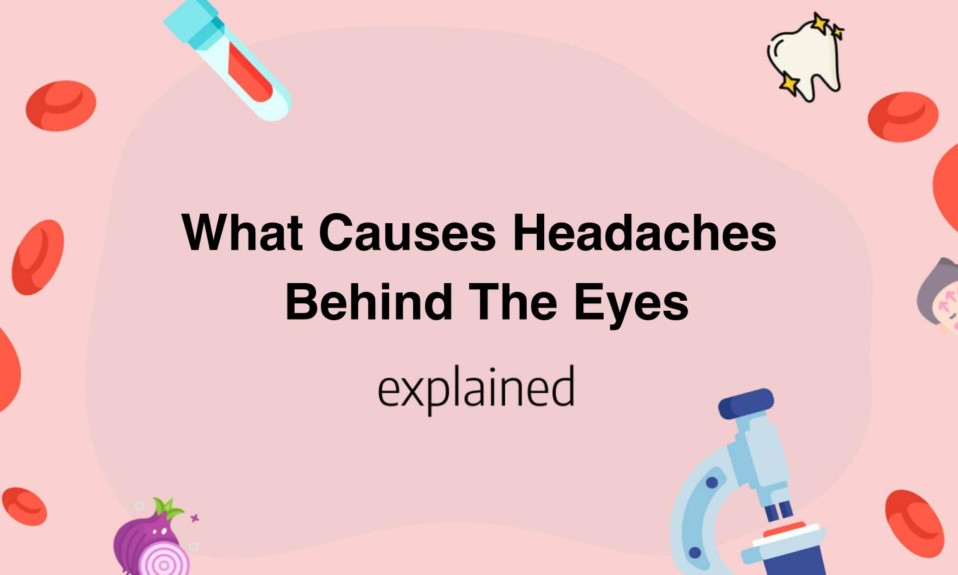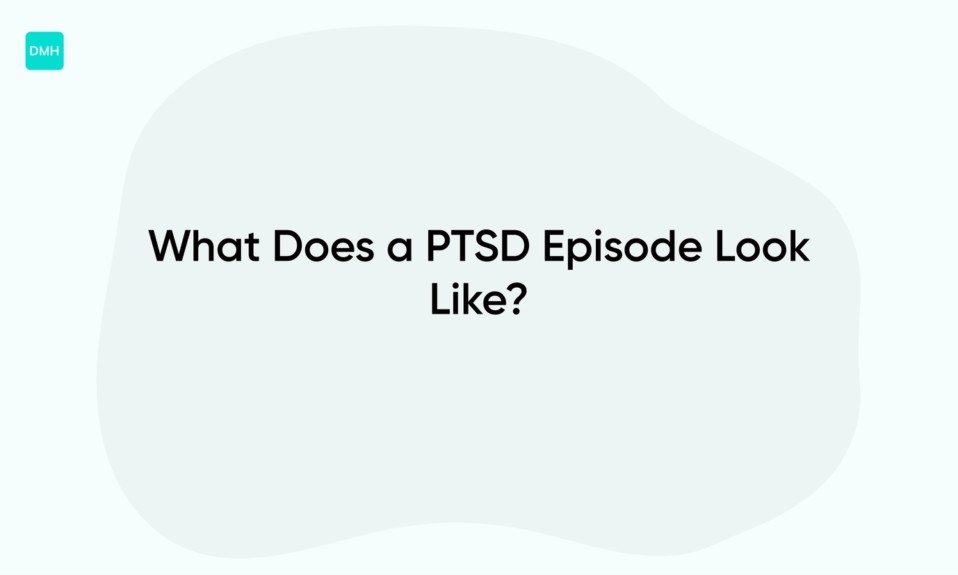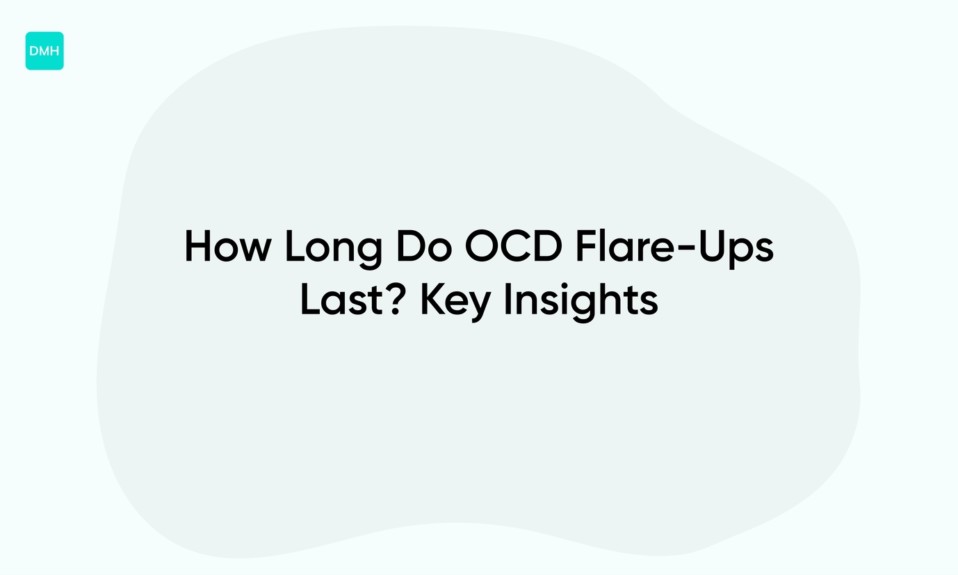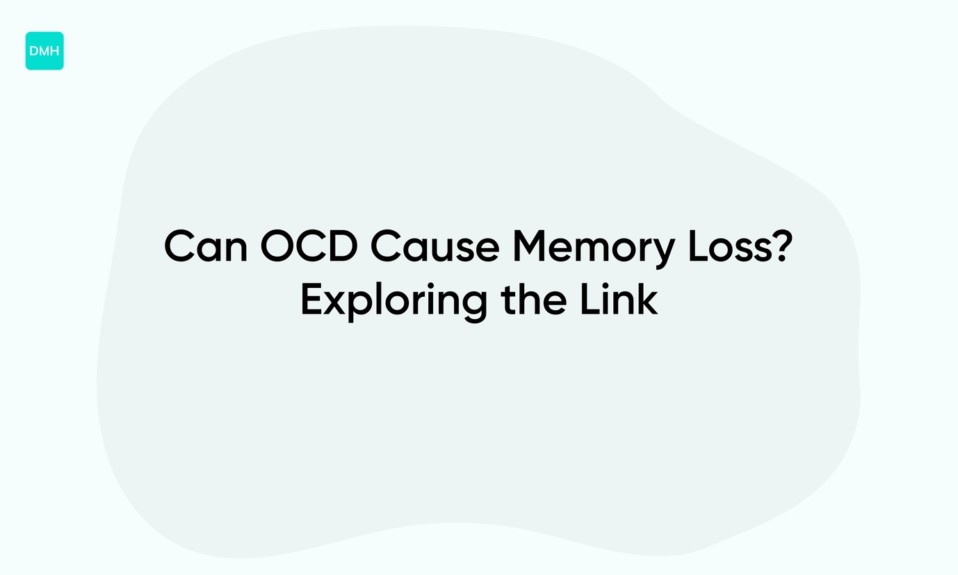Headaches behind the eyes can be a real pain – quite literally! They can be caused by a variety of factors, including tense muscles, eyestrain, sinus pressure, and allergies.
While they can be uncomfortable, there are several ways to alleviate the pain, including relaxing your eyes and getting plenty of rest.
If you’re suffering from headaches behind the eyes, read on to learn more about their causes and how to ease the pain.
- Sinusitis and allergies can cause inflammation in the sinuses and pressure on the eye sockets, resulting in headaches behind the eyes.
- Eye strain from spending too much time on screens or reading can cause tension headaches, which can be felt behind the eyes.
- Migraines can cause throbbing pain behind the eyes, along with other symptoms like sensitivity to light and nausea.
- Cluster headaches typically cause intense pain around one eye but can also cause pain behind the eyes.
- Tension headaches can cause a general feeling of pressure and discomfort, including behind the eyes.
Understanding the Anatomy of Eye-Related Headaches
Eye-related headaches are caused by a variety of factors.
The main cause is associated with eye strain.
Other causes include bright lights, dry eyes, and prolonged computer use.
Eye strain is marked by an uncomfortable sensation in the eye, often accompanied by redness, itching, burning, and fatigue.
Eye stress is due to the eyes’ fatigue from focusing on nearby objects for long periods of time.
Eye strain causes headaches, which are often felt behind the eyes or on the forehead.
People who work on computers or other electronic devices for an extended period may experience eye strain, resulting in eye-related headaches.
In addition to eye strain, some medical conditions can also cause eye-related headaches.
One of these conditions is glaucoma, a condition characterized by increased pressure within the eyes, which can affect the optic nerve, resulting in vision loss and headaches.
Another medical condition that can cause eye-related headaches is dry eye syndrome.
Dry eye syndrome is caused by a decrease in the quality or quantity of tears in the eyes.
These tears are vital for maintaining proper eye moisture, and without them, the eyes can become dry and irritated, leading to headaches.
If left untreated, dry eye syndrome can lead to more severe eye problems.
One way to treat eye-related headaches is to reduce eye strain by taking regular breaks and ensuring proper lighting.
It is also essential to maintain proper eye hygiene to avoid dry eye syndrome.
This includes using artificial tear drops, keeping the eyes moist, and avoiding rubbing the eyes.
Adjusting computer or device screens’ brightness levels can also help reduce eye strain.
If you frequently experience eye-related headaches, it’s helpful to see a doctor who can diagnose and treat any underlying conditions causing the headaches.
They may recommend prescription lenses, medications, or other treatments as necessary.
In conclusion, eye-related headaches can be caused by a variety of factors, including eye strain and medical conditions such as glaucoma and dry eye syndrome.
Taking regular breaks and maintaining proper eye hygiene can help reduce eye strain and prevent eye-related headaches.
If you frequently experience eye-related headaches, it is essential to see a doctor to diagnose and treat any underlying conditions causing the headaches.
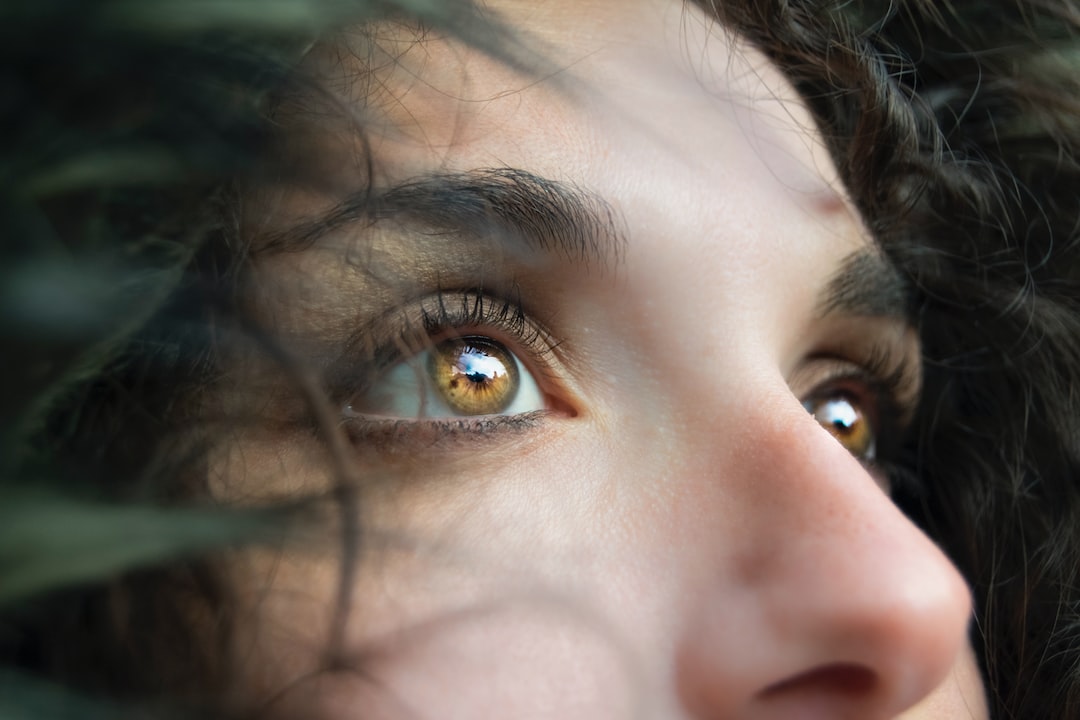
Common Causes of Headaches Behind the Eyes
One of the most common causes of headaches behind the eyes is eyestrain.
This happens when a person’s eyes get tired from prolonged use of digital devices or reading for extended periods.
Eyestrain is also a common problem for people who have uncorrected refractive errors, such as nearsightedness, farsightedness, or astigmatism.
Another cause could be sinus headaches which are caused by pressure and inflammation in the sinus cavities, usually due to allergies or infections.
Migraine headaches are also a common type of headache that can cause pain behind the eyes.
These are often accompanied by other symptoms such as nausea, sensitivity to light, and a pulsing/throbbing pain.
In addition, tension headaches can cause pain behind the eyes.
These headaches are often caused by stress, anxiety, or muscle tension in the neck and upper back.
Cluster headaches, while not as common, can also cause pain behind the eyes.
These headaches are characterized by severe, sharp pain that usually occurs on one side of the head and comes in clusters or bouts.
It’s important to note that headaches behind the eyes can also be a sign of a more serious condition.
For example, a brain aneurysm can cause pain behind the eyes if it is putting pressure on surrounding tissue.
In rare cases, headaches behind the eyes can be a symptom of a tumor or other brain condition.
To prevent headaches behind the eyes, it’s important to take regular breaks from digital devices and engage in eye exercises to reduce eyestrain.
Over-the-counter pain relievers such as ibuprofen or acetaminophen can also be helpful for managing headaches.
If headaches persist or are accompanied by other symptoms, it’s important to seek medical attention to determine the underlying cause.
Being aware of the common causes of headaches behind the eyes can help individuals take the necessary steps to prevent or manage them effectively.
How to Differentiate Between Eye Strain and Headaches
Eye strain and headaches are quite common conditions that many individuals experience, but it can be difficult to differentiate between the two.
Eye strain is a condition that occurs when the eyes get fatigued from overuse or when they are exposed to bright light or glare for extended periods of time.
Headaches, on the other hand, can occur for various reasons and should be diagnosed by a medical professional.
One of the main differences between eye strain and headaches is that eye strain is usually accompanied by symptoms such as dryness, redness, and a burning sensation in the eyes.
To differentiate between eye strain and headaches, it’s essential to consider the triggers, symptoms, and severity of the discomfort.
If a person experiences discomfort after staring at a screen or reading for an extended period, it is most likely eye strain.
However, if the discomfort is accompanied by sensitivity to light, nausea, or vomiting, it may be a headache.
Eye strain can also cause pain in the forehead and temples, whereas headaches can happen anywhere in the head and may feel like a pressure sensation.
Prevention is key to treating eye strain and headaches.
Individuals should try to take frequent breaks when using technology or reading and avoid staring at a screen for too long.
One helpful tip for reducing eye strain is to use anti-glare screens on devices.
For headaches, staying hydrated and eating a balanced diet can help prevent them from occurring.
If individuals experience persistent eye strain or headaches, they should see a medical professional to diagnose the root cause of their discomfort.
In conclusion, eye strain and headaches share similar symptoms, but there are distinguishing factors.
Knowing the triggers and severity of the discomfort, and recognizing additional symptoms that accompany the pain, can help people differentiate between the two conditions.
Preventative measures, such as taking breaks, using anti-glare screens, and maintaining a balanced diet, can help alleviate both of these common conditions.
Natural Remedies for Headaches Behind the Eyes
Headaches behind the eyes can be incredibly uncomfortable and frustrating.
Fortunately, there are several natural remedies that can help alleviate the pain.
One great option is to use essential oils.
Peppermint oil is particularly effective in treating headaches, as it has natural anti-inflammatory properties.
Apply a few drops of peppermint oil to your temples and gently massage the area.
Alternatively, try inhaling peppermint oil by adding a few drops to a diffuser or inhaling directly from the bottle.
Lavender oil is another great choice, as it can help promote relaxation and ease tension.
Another natural remedy is to adjust your diet.
Consuming certain foods can trigger headaches, so it’s important to identify and avoid these foods if possible.
Common triggers include caffeine, chocolate, cheese, and processed meats.
Instead, focus on whole foods like fruits, vegetables, lean proteins, and complex carbohydrates.
Staying hydrated is also important, as dehydration can lead to headaches behind the eyes.
Stress is a major contributor to headaches, so finding ways to manage stress is crucial.
Meditation and yoga are great options, as they can help promote relaxation and reduce tension in the body.
Even just taking a few deep breaths can help alleviate stress and ease headache pain.
Another effective strategy is to engage in physical activity, such as going for a walk or practicing tai chi.
Exercise can help release endorphins, which are natural pain relievers.
In conclusion, there are several natural remedies that can help alleviate headaches behind the eyes.
Essential oils, dietary changes, and stress management techniques are all effective ways to reduce pain and promote overall wellness.
By incorporating these strategies into your daily routine, you can take control of your health and reduce the impact of headaches on your life.
Read also: Can Allergies Cause Diarrhea
What Causes Headaches Behind The Eyes
Headaches behind the eyes can be caused by a variety of factors.
Eye strain is one of the most common causes.
This can be caused by spending long periods of time staring at a computer, phone, or television screen.
Sinusitis is another common cause.
This is inflammation of the sinuses, which can lead to pressure and pain behind the eyes.
Migraine headaches are also known to cause pain behind the eyes.
These headaches are often accompanied by other symptoms such as light sensitivity and nausea.
- Other causes include:
- Tension headaches
- Cluster headaches
- Glaucoma
- Temporal arteritis
If you are experiencing headaches behind the eyes, it is important to see a doctor to determine the underlying cause.
Treatment options will vary depending on the cause of the headache.
For example, eye strain headaches can often be treated by taking frequent breaks and adjusting your computer or phone screen settings.
Sinusitis headaches may require antibiotics or over-the-counter pain relievers.
Migraine headaches can be treated with medication or lifestyle changes such as avoiding trigger foods and getting regular exercise.
In some cases, headaches behind the eyes can be a sign of a more serious condition such as a brain tumor or aneurysm.
While these cases are rare, it is still important to seek medical attention if your headaches are severe or accompanied by other symptoms such as blurred vision or difficulty speaking.
In summary, headaches behind the eyes can have a variety of causes, ranging from minor conditions such as eye strain to more serious conditions such as brain tumors.
If you are experiencing headaches, it is always a good idea to see a doctor to determine the underlying cause and obtain appropriate treatment.
You’ll also like: How Long After Flu Can I Drink Alcohol
Treating Headaches Behind the Eyes with Medication
Headaches behind the eyes, also known as eye headaches, can be quite uncomfortable and can be caused by different factors, including eye strain, sinusitis, migraines, glaucoma, and allergies.
While it is essential to identify the underlying cause of the pain, medication can also provide temporary relief in managing the symptoms.
Nonsteroidal anti-inflammatory drugs (NSAIDs) such as ibuprofen and naproxen are popular over-the-counter medications that can alleviate mild to moderate pain associated with eye headaches.
However, since NSAIDs can have side effects such as gastrointestinal issues, it is crucial to follow the recommended dosage and guidelines for taking the medication.
Another type of medication that can be helpful in treating eye headaches is triptans, which work by constricting blood vessels and stopping inflammation in the nerves.
One example of triptan medication is sumatriptan, which can be taken in pills, injections, or nasal sprays, depending on the individual’s preference and prescription.
However, triptans are not suitable for everyone, and people with underlying health conditions, including heart disease and high blood pressure, should avoid taking them.
For individuals who experience eye headaches due to sinusitis, decongestants and antihistamines can be recommended to treat the underlying condition and alleviate the symptoms.
Saline nasal sprays can also help clear the nasal passages and reduce inflammation, leading to less pressure and pain behind the eyes.
In conclusion, treating eye headaches with medication can be effective in managing the symptoms and providing relief, depending on the underlying cause of the pain.
However, it is crucial to consult with a healthcare professional before taking any medication and to follow the recommended dosage and guidelines for safe and efficient treatment.
Additionally, incorporating lifestyle changes, including reducing screen time, improving posture, and managing stress, can also help prevent eye headaches from occurring in the future.
You’ll also like:

